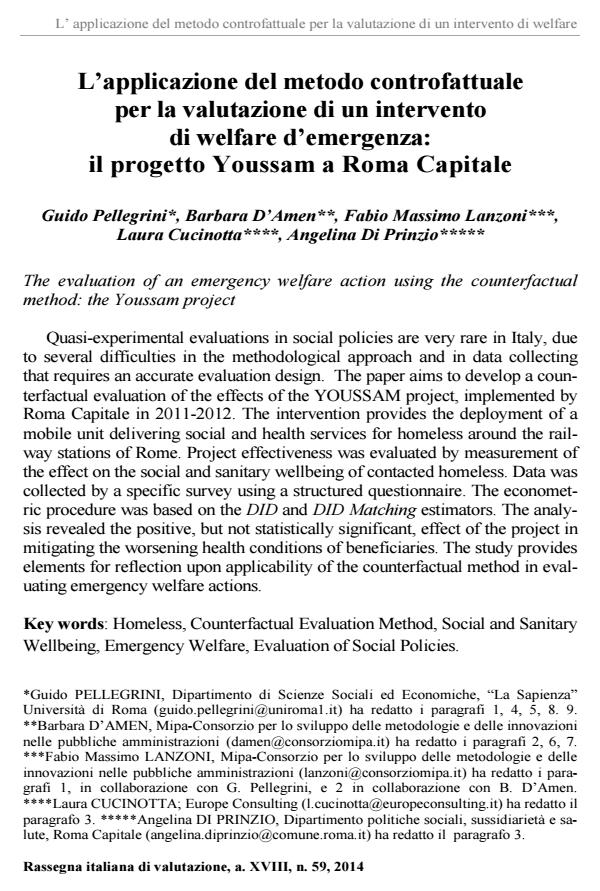The evaluation of an emergency welfare action using the counterfactual method: the Youssam project
Journal title RIV Rassegna Italiana di Valutazione
Author/s Guido Pellegrini, Barbara D'Amen, Fabio Massimo Lanzoni, Laura Cucinotta, Angelina Di Prinzio
Publishing Year 2015 Issue 2014/59
Language Italian Pages 24 P. 124-147 File size 181 KB
DOI 10.3280/RIV2014-059007
DOI is like a bar code for intellectual property: to have more infomation
click here
Below, you can see the article first page
If you want to buy this article in PDF format, you can do it, following the instructions to buy download credits

FrancoAngeli is member of Publishers International Linking Association, Inc (PILA), a not-for-profit association which run the CrossRef service enabling links to and from online scholarly content.
Quasi-experimental evaluations in social policies are very rare in Italy, due to several difficulties in the methodological approach and in data collecting that requires an accurate evaluation design. The paper aims to develop a counterfactual evaluation of the effects of the YOUSSAM project, implemented by Roma Capitale in 2011-2012. The intervention provides the deployment of a mobile unit delivering social and health services for homeless around the railway stations of Rome. Project effectiveness was evaluated by measurement of the effect on the social and sanitary wellbeing of contacted homeless. Data was collected by a specific survey using a structured questionnaire. The econometric procedure was based on the DID and DID Matching estimators. The analysis revealed the positive, but not statistically significant, effect of the project in mitigating the worsening health conditions of beneficiaries. The study provides elements for reflection upon applicability of the counterfactual method in evaluating emergency welfare actions.
Keywords: Homeless, Counterfactual Evaluation Method, Social and Sanitary Wellbeing, Emergency Welfare, Evaluation of Social Policies
Guido Pellegrini, Barbara D'Amen, Fabio Massimo Lanzoni, Laura Cucinotta, Angelina Di Prinzio, L’applicazione del metodo controfattuale per la valutazione di un intervento di welfare d’emergenza: il progetto Youssam a Roma Capitale in "RIV Rassegna Italiana di Valutazione" 59/2014, pp 124-147, DOI: 10.3280/RIV2014-059007